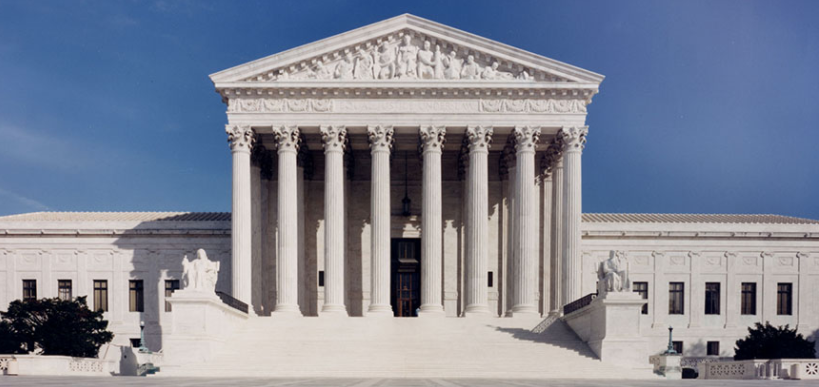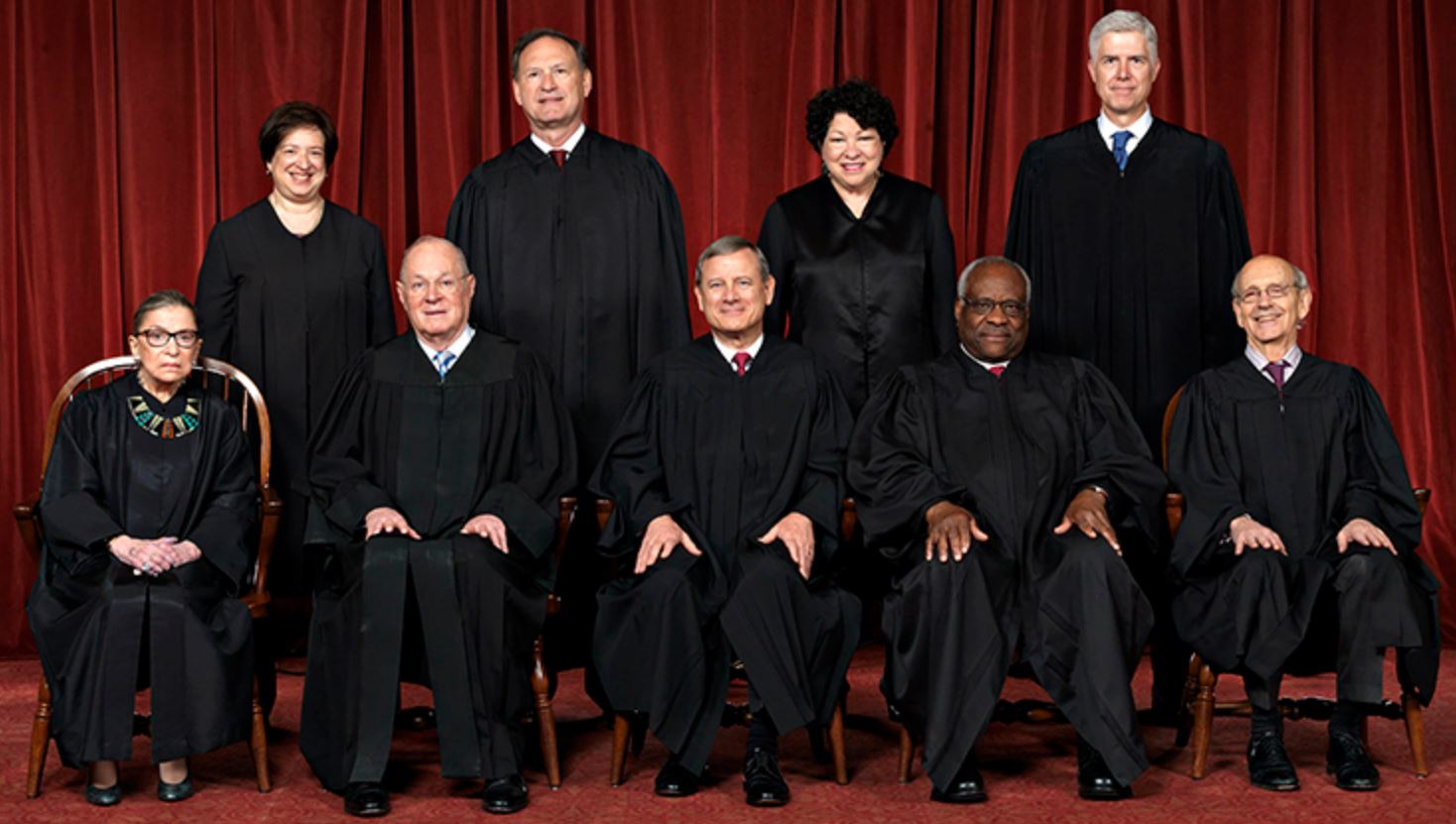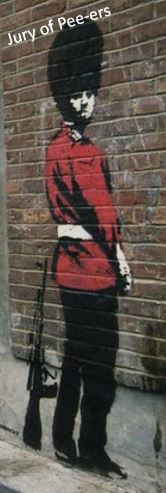Oil States Amicus Briefs Seek to Stabilize IPR Constitutional Footing
by Dennis Crouch
The final group of amicus briefs were filed this past week in Oil States v. Greene’s Energy — This round supporting the Government’s position that Inter Partes Review (IPR) proceedings are consistent with the US Constitution.
As per usual, the briefs are largely divisible into two categories: (1) direct merits arguments focusing on congressional power to enact the IPR regime; and (2) policy briefs arguing that IPRs do important work. I’ll note here that the focus of the policy briefs is on efficient and timely adjudication. I have not seen any of the briefs so far that recognize the third reality – that the PTAB is invaliding patents that would have been upheld by a court. For some reason amicus consider it appropriate to identify court failures in efficiency but not to identify failures in the substantive decisionmaking. The closest on-point is likely Apple’s Brief which promotes the “well-informed and correct” outcomes of the PTAB. 16-712bsacAppleInc.
Overall, the collection of briefs here is quite strong. The most compelling brief in my view is that filed by the well-known team of Duffy and Dabney on behalf of several groups, including the Internet Association. They write:
No decision by this Court has ever held unconstitutional a system of adjudication by an Executive Branch agency on the grounds that the system violates Article III or the Seventh Amendment. This case should not be the first.
Patents are a type of public franchise that Congress has subjected to Executive Branch determination since the founding of the Republic. …
Petitioner and its amici draw inapt comparisons between patent rights and fee simple grants in physical land, but even if patent rights could be analogized to land, the most appropriate analogy would be to leases in public lands, which are subject to administrative revocation. Like leases, patent rights are limited in time, subject to periodic payments to maintain the rights, revert to the public upon expiration, and have the attributes of personal property. Indeed, Petitioner and its amici rely on the statement in 35 U.S.C. § 261 conferring on patents the “attributes of personal property,” but if anything, that statute undermines Petitioner’s case because it strengthens the analogy between patents and leases.
16-712 bsac The Internet Association et al.
A second key brief in the set was filed by a group of law professors led by Professors Lemley (Stanford); Reilly (Kent); and Rai (Duke). The group makes the argument that – as a creature of congressional statute rather than common or natural law – congress also has the full power to establish a system for revocation. 16-712, BSAC 72 Professors of Intellectual Property Law. The idea behind these statements is to step around the Supreme Court’s Stern decision that expresses “skepticism about Congressional efforts to withdraw from Article III courts ‘any matter which, from its nature, is the subject of a suit at the common law, or in equity, or admiralty’ or ‘is made of the stuff of the traditional actions at common law tried by the courts at Westminster in 1789.'” The law professor’s interpretation of these cases though is that rights whose source is statute (rather than common or natural law) can largely be further determined by Congress. This argument skirts around prior discussions that have focused on the reality that patent cases were “law tried by the courts at Westminster in 1789.”
Adding to these legal and historical arguments is the second law professor brief – an interesting and important brief written by Professors Golden (Texas) and Lee (Fordham). 16-712 bsac Professors of Administrative Law. An important contribution of the brief is the recognition that congress’s failure to immediately create an IPR regime back in 1779 should not be seen as preventing action today:
[At that time] Trial courts were better suited to fact-finding and evidence-taking regarding prior art than Congress or Cabinet officers. And like Britain’s Privy Council, which exercised its summary revocation power as late as 1779 and retained but did not exercise that power in the nineteenth century, Congress and Cabinet officers had other pressing responsibilities.
Golden’s Brief also side-steps the public rights debate – arguing that “any lingering concerns about encroachment on Article III judicial power are answered by the existence of a right to an appeal to the Federal Circuit that is de novo on questions of law and meaningful on questions of fact.” See also, Prof. Hollaar, noting that the question presented is “misleading in important respects, including the inaccurate suggestion that Article III courts do not provide substantial oversight in inter partes reviews.” 16-712 bsac Professor Lee A. Hollaar; and from Intel, et al.: “At the time of the Constitution’s adoption, there was no established rule that only courts could invalidate patents.” 16-712bsacIntel.
Still, Golden and others argue that invalidating patents is a public rights question – and thus easily within Congressional power to control through administrative action. On this point, however, the Auto Makers group (including BMW, Ford, GM, Mercedes, Toyota, VW, Volvo, and others), argue that this case is not an appropriate case for revisiting the public-rights doctrine — a project that would have significant and wide-ranging impact on administrative law in general. 16-712bsacAllianceofAutoMfrs.
Public Knowledge and EFF came together to file their brief with a serious pursuit of historical issues worth reading:
Pre-ratification practices in England, the colonies, and the early states consistently treat patents as a privilege granted as a matter of sovereign discretion, with the objective in granting patents being not merely to reward inventors but also to induce economic productivity to the benefit of the state and the public. And as matters of sovereign discretion, the patents of England, the colonies, and the states included conditions intended to advance economic and public interests—including, in many cases, conditions for automatic, non-judicial revocation.
EFF brief-oil-states. Following this approach (although without the same historical research). Arris group and others argue that patent rights should not be considered Blackstonian Property. 16-712bsacArrisGroupEtc_. Finally, on the history angle, the Dell & Facebook brief argues that the Privy Council, rather than Scire Facias, revocation is “the closest historical analogue” to the IPR system. 16-712 bsac Dell.
Many of the briefs IPRs should be seen as the patent office correcting its own mistakes. See, GE’s brief, for example, 16-712 bsac General Electric Company; also, 16-712 bsac BSA The Software Alliance; 16-712 bsac Unified Patents Inc.; and 16-712 bsac SAP America, Inc., et al. Although not seriously questioned here, a the banking group Askeladden addes to the argument that IPR procedures are good enough to ‘statisfy the standards for the adjudication of public rights in non-Article III forums.” 16-712bsacAskeladdenLLC
On the policy side, AARP is seeking lower health-care prices for its members and has generally sided with policies that increase competition and decrease the power of patent rights. In its brief, AARP argues that IPRs are an effective tool for this goal. 16-712 bsac AARP. I-MAK makes a parallel argument in its brief. 16-712 bsac I-MAK (“Unmerited secondary patents stifle generic competition and inflate drug prices.”). See also, 16-712bsacAAM; and 16-712 bsac America’s Health Insurance Plans; 16-712 bsac Mylan Pharmaceuticals Inc_ (“Mylan’s experiences with inter partes review highlight the pro-competitive nature of inter partes review.”). As simply middle-men in the world of commerce, the Retail Association argues that its members likewise need this somewhat more efficient mechanism for eliminating low-quality asserted patents. 16-712 bsac Retail Litigation Center; 16-712 bsac Volkwagen Group of America, Inc. (“IPR proceedings has been successful in providing a low-cost but accurate process for adjudicating patent validity.). Adding on here, TSMC argues that IPR provide an important outlet for manufacturers to protect their stream of commerce in cases where declaratory judgment jurisdiction does not exist. 16-712bsacTaiwanSemiconductorManufacturingCo.
Following these policy arguments, the not-for-profit org KEI particularly explains how the top-side briefs incorrectly argue that the IPR system harms national innovation and wealth. KEI’s point is irrefutable – allowing enforcement of no-invention patents doesn’t help anyone. brief-oil-states KEI_amicus_Oil_States.
Overall, this is a powerful group of briefs that leave me believing that – in the end – the Supreme Court will leave the IPR regime in place and in power.


